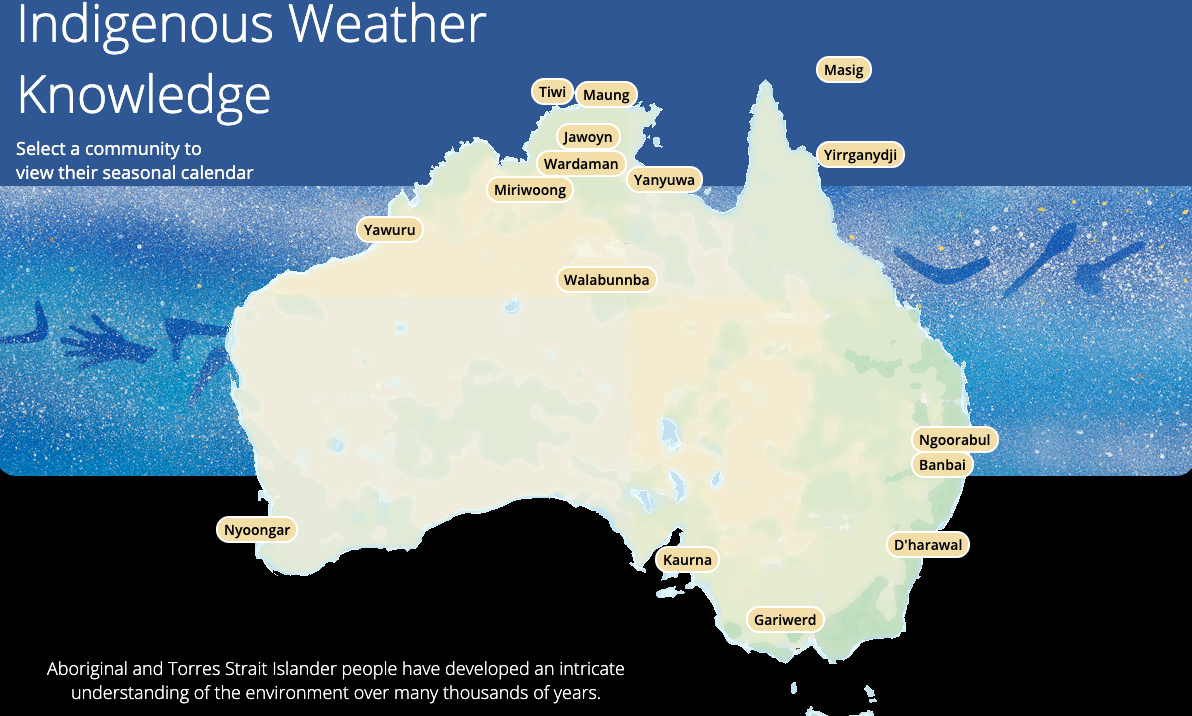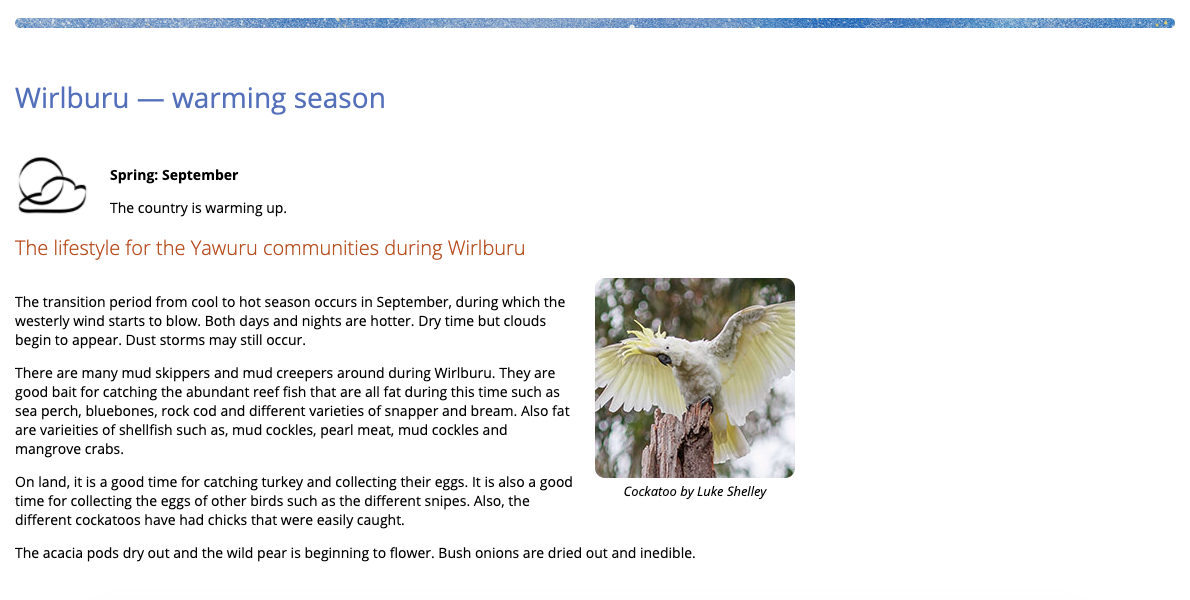In most parts of the world there aren't just 4 seasons. Some parts experience two seasons - wet and dry, some have a more intricate 6-season cycle. The idea of four seasons; Spring, Summer, Autumn and Winter is convenient and cultural but it doesn't always allow for the complexities of weather in specific regions within a country.
The 4 Seasons
Australia marks the beginning of each season at the start of the month (Spring beginning on the 1st of September for example) in line with meteorological seasons [begin on the first day of months], as long term weather trends can be more "meaningfully compared" when each season is definitive. America tends to use astronomical seasons, measuring spring from the equinox (where the day and the night are equal) which usually occurs later in September but changes slightly every year.
Both the meteorological and astronomical seasons make sense for countries with small variation in climate. But, according to the Bureau of Meteorology's ATSI community engagement coordinator Tammy Hunter, the four seasons in the calendar are based on the Northern Hemisphere's climate, so it doesn't take into account the diversity of weather and climate regions for a country as big as Australia. She explains that there is a vastly different climate for people living on Walabunnba country (approximately 300km north of Alice Springs in NT) to people living on D'harawal country (on the east coast, spanning from Sydney to the Shoalhaven). Having a specific seasonal calendar for different regions provides a much more complex overview of Australia's climate and what weather we can expect for each region at any given time.
Traditional Weather and Climate Knowledge
The Indigenous Weather Knowledge website was put together by the Bureau of Meteorology, the Aboriginal and Torres Strait Islander Commission (ATSIC) and Monash University's Centre for Indigenous Studies as a resource and a formal recognition of traditional weather and climate knowledge that has been developed and passed down through countless generations by Aboriginal and Torres Strait Islander people. Through the Indigenous Weather Knowledge website, they are working with communities that wish to record and share valuable seasonal and environmental information and traditional knowledge for the future.
Image: The Indigenous Weather Knowledge Website, Artwork by Laurie Nilsen
There are over 500 different clan groups or nations around the content and each nation has a different understanding of their land and the characteristics that come with each of the weather periods. The weather periods don't have a start date but use observations of the land, flora and fauna to signify the start of a new season and what to expect during it. This observational practice is known as phenology. On the Indigenous Weather Knowledge map we can see a breakdown of each season for the different regions, what to expect from the weather, what plants will and won't grow during that time and signifying animal behaviours.
For example, the Yawuru calendar for the Yawuru people (native title holders of the town of Broome and surrounding areas in WA) features 6 seasons;
- Man-gala (wet season)
- Marrul (hot season)
- Wirralburu (dry season)
- Barrgana (cold season)
- Wirlburu (warming season)
- Laja (hot season)
It is so useful for us to know the specific weather region and seasons that we live in day to day as it gives us a much more nuanced understanding of the weather and our environment but it is just as important for meteorologists and climate scientists to be informed by this knowledge too.
All around the world - " Indigenous peoples' observations contribute importantly to advancing climate science, by ensuring that assessments of climate change impacts and policies for climate change adaptation are meaningful and applicable at the local level." says Gleb Raygorodetsky, a conservation biologist and Adjunct Research Fellow with the Traditional Knowledge Initiative of the United Nations University in an article about traditional weather knowledge holding the key to climate change.
Understanding traditional knowledge of the seasons allows us all to be more in tune with the land on which we live. If you live in Australia, take a look at the Indigenous Weather Knowledge website to find out about the seasons in your area! If not, you could research the seasons according to the Traditional Owners of your own country.
Written by Briana Kennedy
Briana has a passion for the environment and intersectionality. When she's not hosting her community radio show, DJing or producing podcasts, she can be found outside, never far from the ocean. Her ideal day is one where she can fit in a bush walk AND go for a surf.
Read this next: What's Permaculture Living And How Can We Start Doing It? Our Chat With Milkwood's Kirsten Bradley
Head photo Photo by Hasanga Dissanayaka on Unsplash



